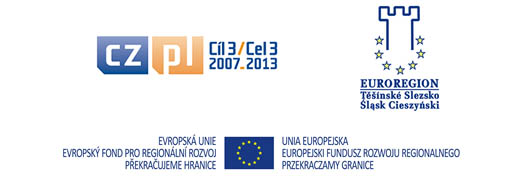Constitutional Government
The residents of Cieszyn were given the opportunity to have an influence on political events for the first time for centuries during the Springtime of Nations in 1848. They could elect representatives to governing bodies and free elections to local government also took place. The most important event was the launch of Tygodnik Cieszyński in May 1848, which from August of that year was edited by Paweł Stalmach. The Polish nationalistic movement, which grew stronger and stronger, began to organise itself around Tygodnik Cieszyński and later Gwiazdka Cieszyńska.
Major changes in Cieszyn’s fortunes took place with the return of constitutional governments within the Austrian Monarchy in 1859. It coincided with the period of greatest economic and demographic growth in Cieszyn’s history. The town had numbered seven thousand residents in 1849 and by 1910 the population had grown to over twenty thousand, not counting almost two thousand soldiers in the town’s garrison. The town was governed by the Town Council, elected for a three-year term of office, which in turn selected an Executive Board led by the Mayor. During that period Dr. Johann Demel (1861-1892), Dr. Leonhard Demel (1892-1908 and 1913-15) and Dr. Rudolph Bukowski (1908-1913) held the office of mayor. In the second half of the 19th century and at the beginning of the 20th Cieszyn was transformed into a modern urban centre, with a well functioning municipal infrastructure. Many public utility buildings were either built or modified, and gas and later electric street lighting was introduced. Most townhouses within the area formerly enclosed by the medieval town walls were extended, mainly in the style of Viennese Art Nouveau. The various hotels and inns provided for the growing numbers of tourists who were now visiting Cieszyn. A railway station was built on the left bank of the Olza, and the suburbs there became the industrial district of the town.
In the second half of the 19th century Cieszyn also became an important centre of education and culture. The Deutsches Theater was opened in 1910 and apart from Fr. Leopold Jan Szersznik’s Library and Museum other museum collections were made available e.g. the Municipal Museum. Cieszyn people were actively involved in the life of the town, and there were 179 registered associations functioning before the First World War. The German Liberal party was the absolute ruler of the Cieszyn, thanks, in part, to the curial electoral system. Also active were the so-called ślązakowcy, members of a movement made up of people from Polish families with leanings towards the German language and culture. The Snaha Club, founded in 1882, represented the aspirations of the Czech minority, accounting for around 6% of the town’s population.
Polish speakers, led by the Polish nationalistic camp which was gaining in strength all the time, were the largest ethnic group. The most important Polish institutions were; the Czytelnia Polska Ludowa (Polish People’s Library), Towarzystwo Oszczędności i Zaliczek Co-operative Bank and the Macierz Szkolna Księstwa Cieszyńskiego (a Polish nationalistic educational and cultural organisation). Only in 1913 was the first representative of the Polish nationalistic camp elected to Cieszyn’s Town Council, and then only as a deputy. The first Polish gymnasium was successfully opened, then the Polish elementary school in ul. Świeżego, and then further Polish educational institutions.
The nationalistic conflicts becoming increasingly bitter at the beginning of the 20th century led in July 1920 to the division of Cieszyn Silesia and Cieszyn between Poland and Czechoslovakia. Cieszyn, which had grown gradually over the centuries, was divided by a state border, border posts were stationed on the bridges and the tramway was done away with.
J. Spyra, transl. D. French










